Photovoltaic Department
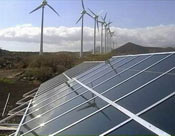

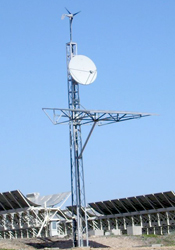
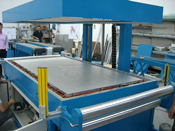

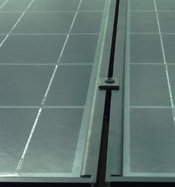
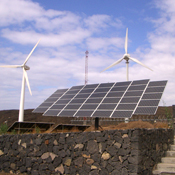
The main goal of this Department is the promotion of photovoltaic solar energy projects and the research in this technology. Its principal activities are the project elaboration, installation and maintenance of photovoltaic plants, the investigation in the photovoltaic field. Recently, a new investigation line has started using hydrogen as a new fuel.
The Department also gives maintenance to the rest of photovoltaic installations at ITER.
Photovoltaic Systems
This new investigation line is chief in the Department, and it is based in the development and implementation of photovoltaic systems, relying in the available solar energy capture for its later transformation into electric consumable energy.
The activity in this department has grown enormously in the past few years and now includes design, promotion, installation, maintenance of new grid connected photovoltaic plants.
The first of these important projects was SOLTEN I. It started with the goal of promoting photovoltaic solar energy, at the time that contributed to the increase of the renewable energy production in the Canary Islands.
This project consists in a photovoltaic installation composed of 150 plants of 100 kW placed in the Industrial Estate of Granadilla, which are connected independently to the grid. ITER acts as executant, solicitor, and maintainer of the installation and each plant belongs to a private investor.
The installations were offered to investors interested in very favourable profitability conditions, due to the fares established in the Royal Decree for the photovoltaic solar energy sale for installations with a power inferior to 100 kW, guaranteed for a period of 25 years. The rate in the sale of the plants overcame the greatest expectations now that in a few months after opening the purchasing period for the plants, the acquisition were completed.
For this reason, and with the purpose of betting for the starting of the photovoltaic plants in the island, ITER has decided, together with the Cabildo Insular de Tenerife, to carry out new similar projects. In consequence, the creation of a new company, SOLTEN II Granadilla S.A. has been promoted, which will be in charge of managing, promoting and exploiting the photovoltaic plants that are meant to be installed in ITER´s lands, as well the lands of Granadilla Industrial Estate where nowadays lies the SOLTEN I.
The installation of 11MW is planned; 7 MW will be placed in the same plot as SOLTEN I and the remaining 4 MW, 2MW will be installed in the coverings of the warehouses that are being built and that will house the photovoltaic module production site and the other 2MW over the structure.
It is worth highlighting the important task carried out by ITER in the innovation field of all of these projects, in which, the inverters used and the structure´s design, where the PV modules are placed, are self created.
The same way as in SOLTEN I, private investors are called to get involved in this initiative, through the participation as shareholders of a new Society. The energy generated by these new PV modules will be injected to the grid, raising with this the percentage of generated energy of the island using its own resources, at the time that it will mean the non-emission of 13200 Tons of CO2 to the atmosphere per year.
Some projects of the photovoltaic department are the Pythagoras project , C-rating, Euclides, Solten and HYRESS.
Advising and Services
The Photovoltaic Department offers technical, legal and economic advice over the possibility of installing photovoltaic plants, either in an isolated power system, as in grid connection, either in small as in large scope.
Hydrogen Technology
In insular regions, the maximum use of the wind´s potential is usually limited by small and weak insular electric grids. The production and later use of hydrogen as an energy vector will contribute to avoid this obstacle. The use of hydrogen as a clean-fuel in the automobile industry will also allow the substitution of the fossil fuels. In this area, the Photovoltaic Department has participated in two important projects concerning the European initiative INTERREG IIIB.
HYMAC: Project whose main goal was to elaborate an energetic plan based in hydrogen, taking into account the specific features of the Macaronesian region. The project consisted in identifying the production technologies, storage and uses concerning the hydrogen, both in a centralized as in a decentralized way and as fuel for land transportation.
HYDROBUS: Demonstrative project about the technical and economic viability of an urban transport system, which, through the associated production and use technologies of the hydrogen, will allow making the most of the wind resources of the Macaronesian archipelagos, for the isolated production of hydrogen, as well as with wind systems connected to the grid.
PV Module Factory
The creation project of a PV module factory in ITER installations was originated by the need to continue and extend the investigations in this work area that have been carried out in the Institute through the past years. The plant main goal is the fabrication and characterization of PV modules that can be installed in projects in which the Institute is involved in. This factory will be the first to work in the archipelago and will contribute to face the increasing demand of the PV market in Spain and particularly in the Canary Islands.
On the other hand, the factory fulfils one of the Institute’s priority goals, now that it will turn into a useful promotion tool for the photovoltaic energy. To achieve this, the roofs of the existing warehouses in ITER installations will be adapted to admit the layout of the 4MW PV modules, being one of the greatest exponents of photovoltaic energy integration in industrial complexes.
The project included three different sections within the warehouse, one intended for the storage of the raw materials, a second one dedicated for the manufacturing, and a third one corresponding to the storage of the finished PV modules. There are 2500m2 available, 1500 appointed for storage and 1000 to the manufacturing area, where two parallel assembly lines north and south. Each line has two cell welding machines (tabber & stringer); a cell positioning robot; glass positioning and module revision tables and a laminator to finish the module. Both line meet in a machine designed to test and classify the modules before attaching the aluminium frame and packing the modules.
In 2008, the PV module factory started working in ITER’s installations. During the first eight months of the year, the machinery was received and the warehouse was equipped. The training procedures for the staff started in September and towards the end of the year started the actual manufacturing of the first modules.
During the three training months, where the north line was used, 200KW were produced and used for ITER’s installations and projects. Subsequent staff incorporations allowed the south line to start working in December, fact that allowed improvements in the performance of the factory.